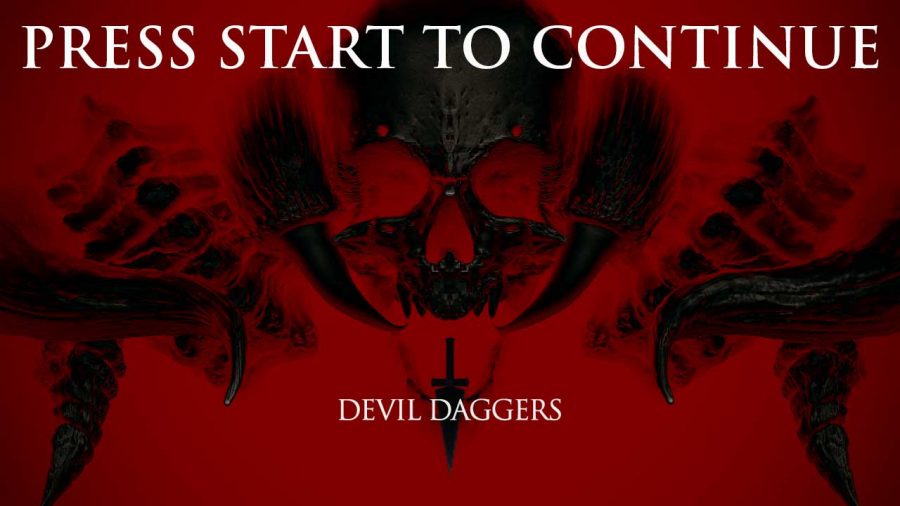Press Start to Continue: Devil Daggers
Imagine a single, darkened room with nothing but a blade in front of you. Of course you examine it, and the moment you pick it up you are immediately hit with an onslaught of demonic creatures, chasing and slithering and screaming, and all you have to do is survive.
That world is in “Devil Daggers,” a brand new indie arcade horror survival game by developer, Sorath released on February 18 of this year. It is heavily based on 1990s first person shooter arcade games.
Available on Steam for $5, the game is well worth every penny spent.
As mentioned, the goal of the game is to survive the endless hordes of demons, and you are equipped with “daggers.”
The game is played in first person and these daggers shoot like projectiles out of your hand with unlimited ammunition. In this way, the game is also like a very fast-paced first person shooter.
The catch to the game, however, is that if you are touched once by any enemy, you die and you must restart, with your score equaling how many seconds you survived.
To put things into perspective, I played for a little under 45 minutes and my personal high score was about 35 seconds.
The current world-wide high score for the game is 612.4779 seconds. That’s only 10 minutes and 12 seconds of game-play!
Now, there’s more strategy to the game than simply killing stuff; certain enemies drop gems which act as upgrades to your weapon, some enemies take more hits to take down, some enemies spawn even more enemies, and of course some enemies are faster and more aggressive than others.
It takes quick reaction times, memorization of patterns and movement, strategy, and a keen eye for surveillance of your surrounding area to really master this game.
All of this combines into a richly detailed experience which forces you to prioritize and perfect your attacks and dodging.
In terms of aesthetic design, “Devil Daggers” follows what is called a “jitter pixel” graphical style, very much in the same vein as games like DOOM and Quake.
The visual and thematic representations are supported further by the minimalist approach to the design; the very stark nature of what you see while playing only adds to the sense of adrenaline-fueled terror and macabre you get.
Similarly, some of the enemy designs are so strange that you sometimes are not even sure what you are looking at. Is the enemy in front of you some kind of creature or a piece of moving architecture? Perhaps it is both? This, again, enhances the eerie and horrific nature of the game.
Furthermore, the sound design in “Devil Daggers” is nothing less than superb.
Constant, full-sounding crackling, crunching, and gurgling noises are heard throughout playtime.
The enemies play off their own sounds as well, and every noise sounds and feels completely otherworldly, pulling you into the environment and making you feel like you’re up against hellish beasts.
In other words, the game completely satisfies and marries the two most sought-after accents of game design: mechanics and art, and the game becomes highly atmospheric and engrossing because of it.
At the end of the day, “Devil Daggers” is a game that focuses purely on what it’s trying to be and doesn’t try to be anything else, and that works well for it.
It rises above the modern day video game trope of cheap gimmicks to make the game “addicting.”
The game does make me want to come back to play over and over, but again, it doesn’t feel cheap.
The game “feels” genuine and there is also great fun to be had in challenging your friends and yourself and gaining a great feeling of accomplishment when you get a new high score.
“Devil Daggers” perfectly achieves what it is trying to do and no part of the mechanics or artistic design are truly lackluster or seem shoehorned in for effect.













